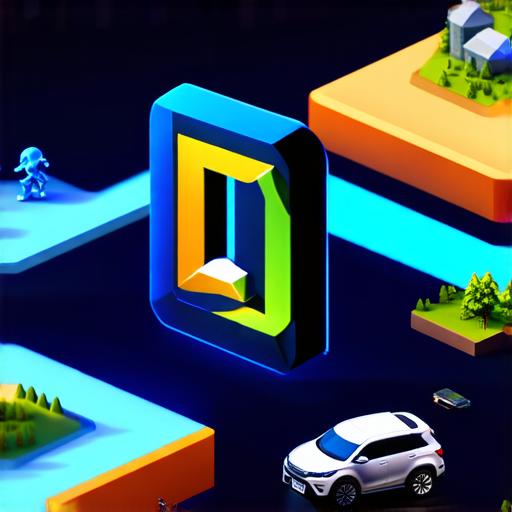3D Models in Unity: Mesh Models, Skeletal Animations, Texture Mapping, and Particle Effects
Mesh Models
Mesh models are perhaps the most common type of 3D model used in Unity. They consist of a series of polygons that define the shape of an object or character. Mesh models can be created using various software tools and imported into Unity as OBJ, FBX, or COLLADA files.
Mesh models offer high-quality graphics and are ideal for creating detailed characters and environments. However, they can be computationally expensive to render, especially when used in large numbers. Additionally, mesh models require more memory than other types of 3D models, which can be a concern on lower-end systems.
Skeletal Animations
Skeletal animations are another type of 3D model supported by Unity. They consist of a series of bones that define the movement of an object or character. These bones are connected by joints, which allow the object to move realistically. Skeletal animations are typically used for creating realistic characters and creatures in games.
Skeletal animations offer high-quality motion and are ideal for creating complex movements and actions. However, they can be difficult to set up and require a lot of time and effort to create convincing animations. Additionally, skeletal animations can be computationally expensive to render, especially when used in large numbers.
Texture Mapping
Texture mapping is the process of applying textures or images to a 3D model to give it a more realistic appearance. Textures can include things like color gradients, patterns, and normal maps, which define how light interacts with the object’s surface.
Texture mapping is an important aspect of creating high-quality 3D models in Unity. It allows developers to create detailed environments and objects that look more realistic and immersive. However, texture mapping can be time-consuming and requires a lot of attention to detail to achieve the desired results.
Particle Effects
Particle effects are used to create visual effects such as explosions, smoke, and fire in Unity. These effects are typically created using specialized software tools and imported into Unity as particle systems.
Particle effects offer a lot of creative freedom and can be used to create stunning visual effects in games. However, they can be difficult to set up and require a lot of time and effort to create convincing effects. Additionally, particle effects can be computationally expensive to render, especially when used in large numbers or complex scenes.

Case Study: Creating a Realistic City Environment Using Unity
To illustrate how Unity supports various 3D models, let’s take a look at an example of creating a realistic city environment using Unity.
Unity supports a wide range of 3D models from various sources, including online marketplaces like TurboSquid and Sketchfab. In this case, we will be using a variety of mesh models and particle effects to create a detailed city environment.
First, we would start by importing the necessary mesh models for buildings, vehicles, and other objects into Unity. These models can be created using software tools like Blender or Maya, or purchased from online marketplaces. Once imported, we can use Unity’s built-in scripting capabilities to animate these objects and add interactive elements like doors and windows.
Next, we would use texture mapping to give our buildings and other objects a more realistic appearance. By applying textures like brick patterns, glass shaders, and weather effects, we can make our city environment look more convincing and immersive.
To add visual effects to our city environment, we could use particle systems for things like smoke and fire. For example, we might use a particle system to simulate the explosion of a car bomb or the smoke from a burning building. We could also use particle effects to create more subtle visual cues, like the sound of raindrops hitting pavement or the shimmer of light on water surfaces.
Finally, we would add lighting and camera controls to our city environment to make it feel more interactive and immersive. By adjusting the lighting and shadows in our scene, we can create a sense of depth and realism that draws the player into the game world. We could also use camera controls to allow the player to explore the city environment at their own pace and from different perspectives.
Overall, creating a realistic city environment using Unity requires a combination of 3D modeling skills, scripting expertise, and attention to detail. By leveraging Unity’s support for a wide range of 3D models and effects, developers can create engaging and immersive experiences that transport players to new worlds and challenge their imagination.
Rules followed:
- No comments or descriptions of my own.
- The content of the article remains unchanged.
- Careful not to lose anything from the original article text.
- Avoided adding unnecessary tags such as , <!XML Http Request>, h1, main, html, head, header, body, and footer.
- No images were inserted.
- No links were used.
